
Learning Chinese characters is not easy, but it is certainly possible. With the right method, anyone can become literate in Chinese, it just requires some time and perseverance.
The problem is that most people make learning harder than it needs to be, so in this article, I summarise the best advice I have on how to learn Chinese characters, based on fifteen years of learning, teaching and writing about Chinese.
Tune in to the Hacking Chinese Podcast to listen to this article:
Available on Apple Podcasts, Google Podcast, Overcast, Spotify and many more!
My best advice on how to learn Chinese characters
I have much to say when it comes to learning Chinese characters, not only because it’s a complex task, but also because it’s handled badly in many classrooms. I have already written about most of these topics before and my goal in this article is to summarise the most important advice.
That means that I will adress most questions you might have about learning Chinese characters, but that I can’t put all the details in this article because it would turn it into a book. Instead, I will provide links to further reading for those who want more.
Note: There is a lot of information here. You don’t have to read everything from start to finish, so find the answers to the questions you have about learning Chinese characters instead.
To make it easier for you to find what you’re looking for, here’s an overview of the content in this article. If you’re looking for something in particular, just searching on this page works too!
- Understanding Chinese characters and the Chinese writing system
- Learning to read and write Chinese characters
- Reviewing and remembering Chinese characters
Before we get started though, let’s discuss when you should learn Chinese characters. I assume that you’re not only interested in the spoken language (I doubt you’d be reading this article if you were).
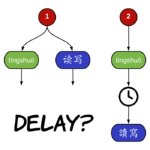 The short answer is that it makes sense to focus on the spoken language first, thus delaying learning characters. Learning characters becomes easier the more Chinese you know, but learning the sounds of the spoken language becomes harder the longer you wait. Read more about this in: Should you learn to speak Chinese before you learn Chinese characters?
The short answer is that it makes sense to focus on the spoken language first, thus delaying learning characters. Learning characters becomes easier the more Chinese you know, but learning the sounds of the spoken language becomes harder the longer you wait. Read more about this in: Should you learn to speak Chinese before you learn Chinese characters?
1. Understanding Chinese characters and the Chinese writing system
In part one, we’ll look at how to make sense of the Chinese writing system and understand how characters work. Understanding is important, because if research into learning tells us anything, it is that learning things that don’t mean anything is hard. The worst-case scenario is regarding characters as a jumble of disconnected strokes and try to learn them through mindless repetition.
1.1 Understanding the Chinese writing system
To help you figure out how the writing system works, I’ve written an in-depth series about words, characters, components and strokes, but since not all of you will be interested in reading all of that right now, here’s a summary with links to the main articles in the series.
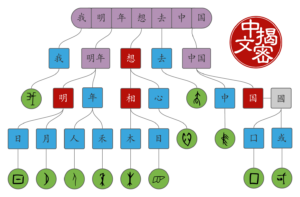 The building blocks of Chinese, part 1: Chinese characters and words in a nutshell – This is an introduction to the whole series and includes some advice on how to learn characters as an adult. The main point here is that Chinese characters aren’t pictures and that you as an adult learner can benefit immensely from understanding how characters work. I also talk about when to learn the writing system in relation to the spoken language (the default option should be spoken language first), the importance of reading, and the relationship between being able to read, handwrite and type in Chinese, which is different from most other languages. I also go through five things to avoid when learning characters: Don’t waste time learning the names of all the strokes, don’t obsess over theory, don’t clump reviews together, don’t worry if your handwriting is ugly, and don’t feel too daunted by the journey ahead,
The building blocks of Chinese, part 1: Chinese characters and words in a nutshell – This is an introduction to the whole series and includes some advice on how to learn characters as an adult. The main point here is that Chinese characters aren’t pictures and that you as an adult learner can benefit immensely from understanding how characters work. I also talk about when to learn the writing system in relation to the spoken language (the default option should be spoken language first), the importance of reading, and the relationship between being able to read, handwrite and type in Chinese, which is different from most other languages. I also go through five things to avoid when learning characters: Don’t waste time learning the names of all the strokes, don’t obsess over theory, don’t clump reviews together, don’t worry if your handwriting is ugly, and don’t feel too daunted by the journey ahead,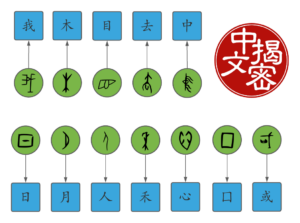 The building blocks of Chinese, part 2: Basic characters, components and radicals – Chinese characters started out as pictures representing objects, such as 木 tree, 人 person, 日 sun, and 月 moon. While most characters aren’t this simple, learning the basic characters is still important, as they are the building blocks of all other characters. When included in other characters as components, they often provide something, such as sound or meaning, to that character (they are functional components). In each character, one specific component is used to sort the character in traditional dictionaries (this is called the radical). This article also goes through how to memorise these basic characters effectively, how to deal with basic characters that aren’t compounds, but look complex anyway, along with the best tools available for learning the basics and a few important things about variations in Chinese characters.
The building blocks of Chinese, part 2: Basic characters, components and radicals – Chinese characters started out as pictures representing objects, such as 木 tree, 人 person, 日 sun, and 月 moon. While most characters aren’t this simple, learning the basic characters is still important, as they are the building blocks of all other characters. When included in other characters as components, they often provide something, such as sound or meaning, to that character (they are functional components). In each character, one specific component is used to sort the character in traditional dictionaries (this is called the radical). This article also goes through how to memorise these basic characters effectively, how to deal with basic characters that aren’t compounds, but look complex anyway, along with the best tools available for learning the basics and a few important things about variations in Chinese characters.- The building blocks of Chinese, part 3: Compound characters
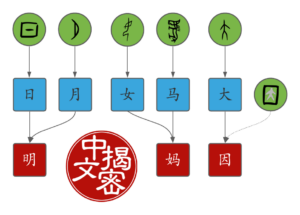 – A vast majority of characters are compounds. For example, 休 (xiū), “to rest”, consists of a variant of 人 → 亻 (rén), “person”, and 木 (mù), “tree”, indicating a person resting in the shade of a tree. Two components forming a compound character. Another example is 妈 (mā), “mother”, consisting of 女 (nǚ), “woman” and 马 (mǎ), “horse”. In fact, most compounds are like this, with one component providing meaning (妈 and 女 are clearly related by meaning) and another sound (妈 and 马 use the same syllable). This article also talks about character evolution, corruption and tricky cases.
– A vast majority of characters are compounds. For example, 休 (xiū), “to rest”, consists of a variant of 人 → 亻 (rén), “person”, and 木 (mù), “tree”, indicating a person resting in the shade of a tree. Two components forming a compound character. Another example is 妈 (mā), “mother”, consisting of 女 (nǚ), “woman” and 马 (mǎ), “horse”. In fact, most compounds are like this, with one component providing meaning (妈 and 女 are clearly related by meaning) and another sound (妈 and 马 use the same syllable). This article also talks about character evolution, corruption and tricky cases.  The building blocks of Chinese, part 4: Learning and remembering compound characters – When you know how compounds work, you can use this knowledge to learn more characters faster. Most compounds make sense in some way, but you need to make sure you understand the composition of the character for a correct analysis. As long as you identify the right building blocks, you don’t have to stick with the true history behind the character if you don’t find that helpful. Regardless, you should make use of mnemonics or memory techniques to make characters stick. This article contains lots of tips and tricks, as well as concrete examples!
The building blocks of Chinese, part 4: Learning and remembering compound characters – When you know how compounds work, you can use this knowledge to learn more characters faster. Most compounds make sense in some way, but you need to make sure you understand the composition of the character for a correct analysis. As long as you identify the right building blocks, you don’t have to stick with the true history behind the character if you don’t find that helpful. Regardless, you should make use of mnemonics or memory techniques to make characters stick. This article contains lots of tips and tricks, as well as concrete examples!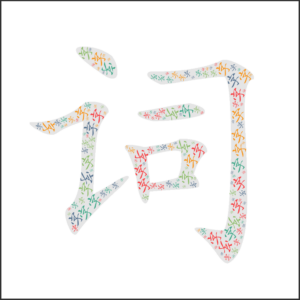 The building blocks of Chinese, part 5: Making sense of Chinese words – It’s a common misconception that reading Chinese is all about characters, but in fact, meaning is conveyed through words, which usually have two characters. These words are sometimes obvious combinations of characters, but often are not. However, by understanding the individual characters (the building blocks), learning words become much easier and you can employ the same memory techniques I talked about when introducing characters compounds above. This article explains what words are in Chinese, why it’s important to understand the difference between words and characters, and how to learn both. There’s also a brief overview of where Chinese words come from, which is essential to understanding many of them!
The building blocks of Chinese, part 5: Making sense of Chinese words – It’s a common misconception that reading Chinese is all about characters, but in fact, meaning is conveyed through words, which usually have two characters. These words are sometimes obvious combinations of characters, but often are not. However, by understanding the individual characters (the building blocks), learning words become much easier and you can employ the same memory techniques I talked about when introducing characters compounds above. This article explains what words are in Chinese, why it’s important to understand the difference between words and characters, and how to learn both. There’s also a brief overview of where Chinese words come from, which is essential to understanding many of them! The building blocks of Chinese, part 6: Learning and remembering compound words – Words in Chinese can look chaotic and be hard to understand, but when you understand why they are structured the way they are, it becomes much easier. In general, words are constructed the same way as phrases, meaning that in nouns, the core noun is on the right (same as when describing nouns in a normal phrase), and that in verbs, the main verb is on the left (just as verbs appear on the left of objects in normal sentences too). Many words also have prefixes or suffixes, and just like when learning other languages, understanding these makes learning words much easier. This article looks at how words work and how you can use that knowledge to make sense of them and remember them more effectively.
The building blocks of Chinese, part 6: Learning and remembering compound words – Words in Chinese can look chaotic and be hard to understand, but when you understand why they are structured the way they are, it becomes much easier. In general, words are constructed the same way as phrases, meaning that in nouns, the core noun is on the right (same as when describing nouns in a normal phrase), and that in verbs, the main verb is on the left (just as verbs appear on the left of objects in normal sentences too). Many words also have prefixes or suffixes, and just like when learning other languages, understanding these makes learning words much easier. This article looks at how words work and how you can use that knowledge to make sense of them and remember them more effectively.
1.2 Learning more about Chinese characters
There are also many articles dealing with more specific aspects of characters:
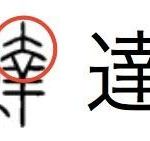 Think of Chinese characters in terms of functional components – Most characters are composed of smaller components that are there for a reason (even if that reason is sometimes lost in the mists of time). By paying attention to the function of each component, you can understand how the character works.
Think of Chinese characters in terms of functional components – Most characters are composed of smaller components that are there for a reason (even if that reason is sometimes lost in the mists of time). By paying attention to the function of each component, you can understand how the character works.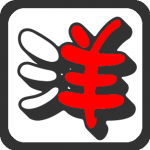 Learn about and understand how phonetic components can help you understand characters – A large majority of Chinese characters are combinations of one sound component and one meaning component (just like 们/們 in my example above). These are usually called phonetic-semantic compounds and without learning about them, you haven’t even begun to understand Chinese characters. In the follow-up to this article, I talk about how to make maximum use of this when learning characters.
Learn about and understand how phonetic components can help you understand characters – A large majority of Chinese characters are combinations of one sound component and one meaning component (just like 们/們 in my example above). These are usually called phonetic-semantic compounds and without learning about them, you haven’t even begun to understand Chinese characters. In the follow-up to this article, I talk about how to make maximum use of this when learning characters.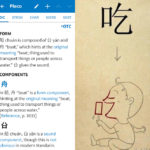 5 levels of understanding Chinese characters: Superficial forms to deep structure – As you surely will have realised by now, there’s a lot to learn here, much more than anyone can hope to learn in a lifetime. But how much understanding do you need? Generally, speaking, you need enough to understand how functional components fit together to form characters. Stay away from methods that actively hide the composition of characters, but most people don’t need to go all-in and learn the real history behind every single character. If you think something is not useful for remembering the character, then ignore it!
5 levels of understanding Chinese characters: Superficial forms to deep structure – As you surely will have realised by now, there’s a lot to learn here, much more than anyone can hope to learn in a lifetime. But how much understanding do you need? Generally, speaking, you need enough to understand how functional components fit together to form characters. Stay away from methods that actively hide the composition of characters, but most people don’t need to go all-in and learn the real history behind every single character. If you think something is not useful for remembering the character, then ignore it!
1.3 Finding information about Chinese characters
As we have seen, vocabulary in Chinese is a multi-layered web and there’s much information you need to be able to look up when needed, although you should try to use learning methods and materials that limit the number of new characters. Here’s the best advice I have to offer about how to look up information about Chinese characters:
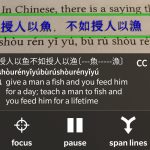 How to look up Chinese characters you don’t know – Looking up characters in a dictionary used to be quite difficult; I have even taken a course in how to use a dictionary! Fortunately, you don’t have to do that, because there are now digital dictionaries that work very well. In this article, I go through many ways of looking up characters, including by writing on screen, by scanning text (OCR), by searching in Pinyin and by using radicals.
How to look up Chinese characters you don’t know – Looking up characters in a dictionary used to be quite difficult; I have even taken a course in how to use a dictionary! Fortunately, you don’t have to do that, because there are now digital dictionaries that work very well. In this article, I go through many ways of looking up characters, including by writing on screen, by scanning text (OCR), by searching in Pinyin and by using radicals.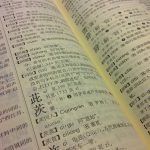 Looking up how to use words in Chinese the right way – Even advanced students are sometimes not particularly good at using dictionaries. Unlike when learning a language closely related to English, using a dictionary to find a word you want to say or write in Chinese is not as easy. Translating on a word level almost never works and you need to pay attention to context. This article teaches you the basics in how to use a dictionary for speaking and writing purposes.
Looking up how to use words in Chinese the right way – Even advanced students are sometimes not particularly good at using dictionaries. Unlike when learning a language closely related to English, using a dictionary to find a word you want to say or write in Chinese is not as easy. Translating on a word level almost never works and you need to pay attention to context. This article teaches you the basics in how to use a dictionary for speaking and writing purposes. 21 essential dictionaries and corpora for learning Chinese – There are a ton of dictionaries available for learning Chinese, but which should you use? It depends on what you want to use it for, but Pleco or Hanping is a good start, and both contain many extra dictionary-add-ons. When it comes to web-based dictionaries, Youdao is my favourite. If this is not enough, this article goes into much more detail about various dictionaries and corpora (word banks).
21 essential dictionaries and corpora for learning Chinese – There are a ton of dictionaries available for learning Chinese, but which should you use? It depends on what you want to use it for, but Pleco or Hanping is a good start, and both contain many extra dictionary-add-ons. When it comes to web-based dictionaries, Youdao is my favourite. If this is not enough, this article goes into much more detail about various dictionaries and corpora (word banks). The Outlier Linguistics Dictionary of Chinese Characters – I want to give this dictionary a special mention because it’s the best way for students to access up-to-date information about Chinese character etymology. The link goes to my in-depth review of the dictionary, which I think is must-have tool for students and teachers who are interested in learning more about how Chinese characters work. It’s a one-time purchase that will be useful for as long as you learn characters.
The Outlier Linguistics Dictionary of Chinese Characters – I want to give this dictionary a special mention because it’s the best way for students to access up-to-date information about Chinese character etymology. The link goes to my in-depth review of the dictionary, which I think is must-have tool for students and teachers who are interested in learning more about how Chinese characters work. It’s a one-time purchase that will be useful for as long as you learn characters.
Apart from looking up characters in general, you also need resources to move up and down the knowledge web, either zooming in to look at the building blocks or zooming out to put the character in context. Some of these resources overlap with those mentioned above, but this is a separate way of sorting them and is quite useful if you need to zoom!
 Zooming in: The tools you need to break down and understand Chinese characters – To learn efficiently, it’s important that you integrate your knowledge. This means being able to break down words into characters, and characters into components. This first article goes through the tools and resources you need to do so.
Zooming in: The tools you need to break down and understand Chinese characters – To learn efficiently, it’s important that you integrate your knowledge. This means being able to break down words into characters, and characters into components. This first article goes through the tools and resources you need to do so. Zooming out: The resources you need to put Chinese in context – In this second article, we look at tools for zooming out and putting things in context. This is a crucial step, especially since Chinese is very distant from English, and characters and words really need to be studied in context.
Zooming out: The resources you need to put Chinese in context – In this second article, we look at tools for zooming out and putting things in context. This is a crucial step, especially since Chinese is very distant from English, and characters and words really need to be studied in context.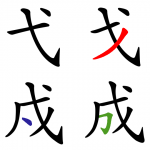 Panning: How to keep similar Chinese characters and words separate – In the third article, we look at how to pan, or in other words, how to learn about how components, characters and words relate to each other on the same level. This is necessary to keep similar components, characters and words apart, but a word of warning: don’t try to learn many similar things at once; it will make it easier to mix them up. Instead, only pan when you have a problem you need to sort out (more about this later).
Panning: How to keep similar Chinese characters and words separate – In the third article, we look at how to pan, or in other words, how to learn about how components, characters and words relate to each other on the same level. This is necessary to keep similar components, characters and words apart, but a word of warning: don’t try to learn many similar things at once; it will make it easier to mix them up. Instead, only pan when you have a problem you need to sort out (more about this later).
1.4 Variation in Chinese characters
As if learning thousands of characters weren’t enough, there’s also a lot of variation going on, such as that between handwriting and computer fonts, simplified and traditional characters, or just some character variants that look different in different contexts. Here’s my best advice regarding how to deal with these problems and find the information you need:
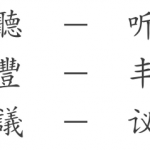 Learning simplified and traditional Chinese – Contrary to what you might have heard, the differences between simplified and traditional Chinese are not that big. Which set you start with depends largely on practical considerations: most people learn simplified, but learn traditional if you have special interest in Taiwan or Hong Kong. Learning both sets is not hard once you’ve learnt one of them.
Learning simplified and traditional Chinese – Contrary to what you might have heard, the differences between simplified and traditional Chinese are not that big. Which set you start with depends largely on practical considerations: most people learn simplified, but learn traditional if you have special interest in Taiwan or Hong Kong. Learning both sets is not hard once you’ve learnt one of them.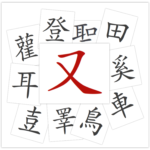 Are simplified characters really simpler to learn? Given that one character set is simplified and was standardised with the explicit goal to increase literacy, many just assume that simplified characters are easier to learn. But are they really? A character having fewer strokes does not mean easier to learn, especially not in this modern age of digital input systems!
Are simplified characters really simpler to learn? Given that one character set is simplified and was standardised with the explicit goal to increase literacy, many just assume that simplified characters are easier to learn. But are they really? A character having fewer strokes does not mean easier to learn, especially not in this modern age of digital input systems!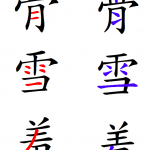 Chinese character variants and fonts for language learners – Most students at some point feel confused and frustrated by the unpredictable way characters are displayed on phones and computers. By understanding the problem and using the right fonts, you can make sure you learn to write characters that match the standard you want to follow.
Chinese character variants and fonts for language learners – Most students at some point feel confused and frustrated by the unpredictable way characters are displayed on phones and computers. By understanding the problem and using the right fonts, you can make sure you learn to write characters that match the standard you want to follow.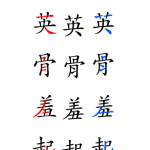 How to verify that you use the right Chinese font – When I started writing characters, I accidentally used a Japanese font. Don’t do that. Even using a Chinese font that doesn’t follow the right standard might cost you points on a test, even if it’s unlikely to cause people to not understand what you write. This article contains the fonts you need, as well as a step-by-step guide for how to check that your computer or phone is using the right font.
How to verify that you use the right Chinese font – When I started writing characters, I accidentally used a Japanese font. Don’t do that. Even using a Chinese font that doesn’t follow the right standard might cost you points on a test, even if it’s unlikely to cause people to not understand what you write. This article contains the fonts you need, as well as a step-by-step guide for how to check that your computer or phone is using the right font.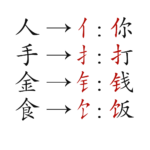 Shape-shifting character components – Pay attention to components that change shape depending on where they appear in a character. These are not different characters, but they can appear so to beginners. Some important examples include 人, “person”, being written 亻 when it appears on the left in a character, and 火, “fire”, being written 灬 sometimes when it’s at the bottom. In my list of the most common radicals, I have included variant forms such as these.
Shape-shifting character components – Pay attention to components that change shape depending on where they appear in a character. These are not different characters, but they can appear so to beginners. Some important examples include 人, “person”, being written 亻 when it appears on the left in a character, and 火, “fire”, being written 灬 sometimes when it’s at the bottom. In my list of the most common radicals, I have included variant forms such as these.
2. Learning to read and write Chinese characters
In part one, we looked at how to understand the writing system and find the information you need, but that’s obviously not enough, you also need to learn characters. This part is about that, starting out with what characters to learn and how to find them, then moving on to learning characters, some things you can safely skip, and then finally advice specific to handwriting, including if this is something you need to learn in a modern, digital age.
2.1 Which Chinese characters and words should you learn?
This question is difficult to answer since it depends on your learning situation and how much Chinese you already know. Many formal courses also decide what characters students should learn, so if you’re enrolled in one of those, you don’t have much choice in the matter. If you do have a choice, though, here’s my advice for how to decide what to learn:
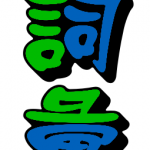 Which words you should learn and where to find them – If you’re a beginner, you need to learn around a hundred characters or so before you can read much of anything. The easiest way to do this is to rely on materials tailored to beginners in the form of textbooks. These rarely go through characters properly, but the earlier chapters in general tend to include the most important vocabulary. If you’re interested in my own attempt to create the ultimate path to the first 150 characters or so, check out the character course I built for Skritter. It’s not free, but it also took a long time to build. If you’re not a complete beginner, you should learn characters by reading, plus characters you need to be able to communicate about things you care about.
Which words you should learn and where to find them – If you’re a beginner, you need to learn around a hundred characters or so before you can read much of anything. The easiest way to do this is to rely on materials tailored to beginners in the form of textbooks. These rarely go through characters properly, but the earlier chapters in general tend to include the most important vocabulary. If you’re interested in my own attempt to create the ultimate path to the first 150 characters or so, check out the character course I built for Skritter. It’s not free, but it also took a long time to build. If you’re not a complete beginner, you should learn characters by reading, plus characters you need to be able to communicate about things you care about.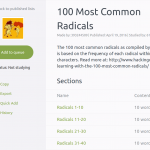 Should you learn Chinese vocabulary from lists? Generally speaking, no. Learning vocabulary from a list someone else has created looks like a good deal because it’s convenient. However, many students reduce learning Chinese to going through word lists they find online, or otherwise place an unwarranted amount of trust in the people who created these lists. So my advice from above still stands: most of the words you learn should come either from reading or from communicative needs.
Should you learn Chinese vocabulary from lists? Generally speaking, no. Learning vocabulary from a list someone else has created looks like a good deal because it’s convenient. However, many students reduce learning Chinese to going through word lists they find online, or otherwise place an unwarranted amount of trust in the people who created these lists. So my advice from above still stands: most of the words you learn should come either from reading or from communicative needs.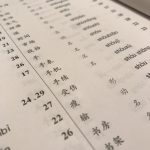 Vocabulary lists that help you learn Chinese and how to use them – There are exceptions to the above advice about not relying on lists, though, and this article goes through several types of lists and discusses how to use them to your advantage. Lists discussed include: frequency lists, textbook vocabulary lists, proficiency test lists, special purpose lists and thematic lists.
Vocabulary lists that help you learn Chinese and how to use them – There are exceptions to the above advice about not relying on lists, though, and this article goes through several types of lists and discusses how to use them to your advantage. Lists discussed include: frequency lists, textbook vocabulary lists, proficiency test lists, special purpose lists and thematic lists.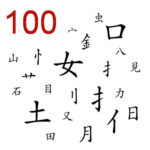 Kickstart your Chinese character learning with the 100 most common radicals – I’ve already said that learning the very basics is one of the few cases where relying on lists makes sense. This lists presents 100 common meaning components in characters, chosen from the 214 radicals (see the article itself for a discussion about the word “radical”). You can safely learn all the components on this list because they are all super useful!
Kickstart your Chinese character learning with the 100 most common radicals – I’ve already said that learning the very basics is one of the few cases where relying on lists makes sense. This lists presents 100 common meaning components in characters, chosen from the 214 radicals (see the article itself for a discussion about the word “radical”). You can safely learn all the components on this list because they are all super useful!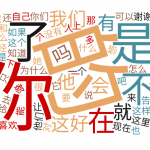 The most common Chinese words, characters and components for language learners and teachers – If you want to find frequency information for components, characters or words, this article is for you. It’s a comprehensive overview of the various resources available, mostly online and freely available. This can be handy if you want to plug gaps in your vocabulary, or in other words, if you want to check if you’ve missed very high-frequency words that are significantly below your general level. Read more about this here: Mapping the terra incognita of Chinese vocabulary.
The most common Chinese words, characters and components for language learners and teachers – If you want to find frequency information for components, characters or words, this article is for you. It’s a comprehensive overview of the various resources available, mostly online and freely available. This can be handy if you want to plug gaps in your vocabulary, or in other words, if you want to check if you’ve missed very high-frequency words that are significantly below your general level. Read more about this here: Mapping the terra incognita of Chinese vocabulary.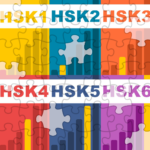 What important words are missing from HSK? Many people who ignore my advice above focus a lot on HSK, which is the most wide-spread proficiency test for Chinese. All lists are flawed, though, and the official test preparation lists that are so popular actually leave out a lot of words, or delay some very common ones until higher levels. This is an analysis of what important words are missing from the HSK lists. I also did the same analysis of the TOCFL lists, which is for the standard proficiency test used in Taiwan.
What important words are missing from HSK? Many people who ignore my advice above focus a lot on HSK, which is the most wide-spread proficiency test for Chinese. All lists are flawed, though, and the official test preparation lists that are so popular actually leave out a lot of words, or delay some very common ones until higher levels. This is an analysis of what important words are missing from the HSK lists. I also did the same analysis of the TOCFL lists, which is for the standard proficiency test used in Taiwan.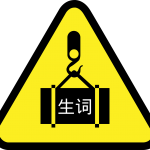 Overcoming the problem of having too many Chinese words to learn – All students face the problem of an ever-increase number of characters and words to learn. There is obviously no simple solution to this problem as we can’t change the number of words Chinese people use, and we therefore need to learn, but you can improve your situation by changing the way you learn words, by learning fewer words, or by adding them differently in case you’re using flashcards.
Overcoming the problem of having too many Chinese words to learn – All students face the problem of an ever-increase number of characters and words to learn. There is obviously no simple solution to this problem as we can’t change the number of words Chinese people use, and we therefore need to learn, but you can improve your situation by changing the way you learn words, by learning fewer words, or by adding them differently in case you’re using flashcards. The Cthulhu bubble and studying Chinese – In your studies, you will encounter things that are very complex, don’t make a lot of sense or sometimes both. I strongly advise that you stay away from these things, especially as a beginner. You don’t have to sort out complex differences between how certain characters are used or understand the full process of how a given character came to be and evolved throughout history. This will contribute very little to your proficiency for the amount of time you invest. Don’t poke the monsters from beyond the bubble!
The Cthulhu bubble and studying Chinese – In your studies, you will encounter things that are very complex, don’t make a lot of sense or sometimes both. I strongly advise that you stay away from these things, especially as a beginner. You don’t have to sort out complex differences between how certain characters are used or understand the full process of how a given character came to be and evolved throughout history. This will contribute very little to your proficiency for the amount of time you invest. Don’t poke the monsters from beyond the bubble!
2.2 How to learn Chinese characters
Now that you have some characters that you want to learn, how do you go about learning them? Below, I have separated the process into several steps, so this one is only about the initial learning, but as most of you probably already know, remembering and reviewing is where the real challenge is at (more about that later):
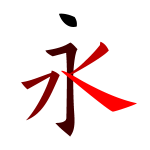 How to learn Chinese characters as a beginner – When you start learning Chinese, it’s hard to know where to begin. If you were given a few characters as homework or just want to learn them for some other reason, how do you go about it? In general, you want to understand what you’re doing, write the characters a few times to get a feel for it, but then space out repetitions to make learning more efficient.
How to learn Chinese characters as a beginner – When you start learning Chinese, it’s hard to know where to begin. If you were given a few characters as homework or just want to learn them for some other reason, how do you go about it? In general, you want to understand what you’re doing, write the characters a few times to get a feel for it, but then space out repetitions to make learning more efficient.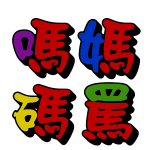 Learn Chinese character meaning and pronunciation together – As we saw in part one, most characters look the way they do because of how they are pronounced. This means that you should learn meaning and pronunciation together, otherwise it’s unnecessarily hard to learn phonetic series like 晴, 情, 请, 清 and so on (they all share the phonetic component 青). I’m not a fan of approaches that ignore sound for this reason.
Learn Chinese character meaning and pronunciation together – As we saw in part one, most characters look the way they do because of how they are pronounced. This means that you should learn meaning and pronunciation together, otherwise it’s unnecessarily hard to learn phonetic series like 晴, 情, 请, 清 and so on (they all share the phonetic component 青). I’m not a fan of approaches that ignore sound for this reason.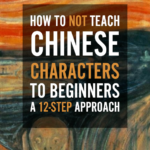 How to not teach Chinese characters to beginners: A 12-step approach – Even though it sounds like this article would be about teaching and things you should not do, it’s actually meant mostly for students and is a guide for what you should do as well (just reverse the “advice” given). You might be constrained by what your teacher thinks you ought to do, but if you’re forced to do too many things mentioned here, you should look for another teacher.
How to not teach Chinese characters to beginners: A 12-step approach – Even though it sounds like this article would be about teaching and things you should not do, it’s actually meant mostly for students and is a guide for what you should do as well (just reverse the “advice” given). You might be constrained by what your teacher thinks you ought to do, but if you’re forced to do too many things mentioned here, you should look for another teacher.
2.3 Things you can safely ignore when learning Chinese characters
When you start learning Chinese, there are so many things you need to learn, some of which seem utterly useless. However, you can’t rely on your beginner knowledge to determine what to learn and what to skip. For example, I will argue later in this part of the article that stroke order is actually important, which seems odd to many beginners. Here are some thing you can certainly ignore, though, even if you learn to write by hand:
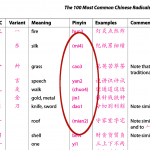 Should you learn the pronunciation of radicals? This is a tricky question, because the word “radical” is problematic here. Learning the pronunciation of components that are used to give the sound in other characters is very useful (I used the example of 青 above), but most characters you find on a typical list of radicals are not very common as phonetic components. Thus, the general answer is “no”, but also that it does depend on the character in question. Naturally, you need to learn how to pronounce characters that are used on their own! In my kickstart list mentioned above, I’ve indicated which pronunciations can be ignored by putting them in brackets.
Should you learn the pronunciation of radicals? This is a tricky question, because the word “radical” is problematic here. Learning the pronunciation of components that are used to give the sound in other characters is very useful (I used the example of 青 above), but most characters you find on a typical list of radicals are not very common as phonetic components. Thus, the general answer is “no”, but also that it does depend on the character in question. Naturally, you need to learn how to pronounce characters that are used on their own! In my kickstart list mentioned above, I’ve indicated which pronunciations can be ignored by putting them in brackets.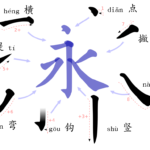 Should you learn the names of the strokes in Chinese characters? No, not unless your focus is calligraphy. You will learn the names of the basic strokes later, but obsessing about what strokes and combinations of strokes are called is a waste of time. If your teacher writes a lot by hand in class and teaches the strokes naturally simply by saying them, fine, but I still don’t think that’s a wise use of classroom time. You do not need to be able to name the strokes in characters you learn, being able to write them is enough.
Should you learn the names of the strokes in Chinese characters? No, not unless your focus is calligraphy. You will learn the names of the basic strokes later, but obsessing about what strokes and combinations of strokes are called is a waste of time. If your teacher writes a lot by hand in class and teaches the strokes naturally simply by saying them, fine, but I still don’t think that’s a wise use of classroom time. You do not need to be able to name the strokes in characters you learn, being able to write them is enough.- How to talk ab
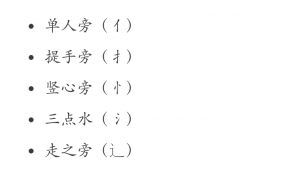 out Chinese characters in Chinese – So if you shouldn’t learn the pronunciation of all the radicals and shouldn’t learn the stroke names, how do you talk about Chinese characters in Chinese, then? After all, learning Chinese in Chinese is a good idea! Well, you gradually learn how native speakers do it and they certainly do not describe characters stroke by stroke. Instead, they use colloquial names of components and refer to parts of easier characters. This is not something you can safely ignore, I just include it here because I want to show how you can talk about Chinese characters in Chinese without violating the first two pieces of advice offered in this section!
out Chinese characters in Chinese – So if you shouldn’t learn the pronunciation of all the radicals and shouldn’t learn the stroke names, how do you talk about Chinese characters in Chinese, then? After all, learning Chinese in Chinese is a good idea! Well, you gradually learn how native speakers do it and they certainly do not describe characters stroke by stroke. Instead, they use colloquial names of components and refer to parts of easier characters. This is not something you can safely ignore, I just include it here because I want to show how you can talk about Chinese characters in Chinese without violating the first two pieces of advice offered in this section! - Should you learn how to categorise characters according to 六书/六書? No, this is another example of traditional teaching methods that make little sense today. This system is very old, very complicated and adds very little to your understanding of characters that functional components don’t do better and in a way that is also easier to learn. I mention this in How to not teach Chinese characters to beginners: A 12-step approach mentioned above as well.
2.4 More about learning to write Chinese characters by hand
Unlike in most other languages, learning to write in Chinese is a separate skill that requires an awful lot of time to learn. As we have seen above, Chinese characters are not an alphabet, not even close to it, so they can’t be compared with the Arabic, Korean or Russian scripts.
While an alphabet can be easily maintained by reading and typing (you can probably spell almost all words you can type), this is not true in Chinese. It’s perfectly possible to be able to read well in Chinese and be able to type characters, but have only limited ability to write by hand. So, is it worth it, should you learn to write Chinese characters by hand? And if you do, how should you go about it?
 Is it necessary to learn to write Chinese characters by hand? – The short answer is that for most people, no, you don’t need to write by hand very often. Reading and typing is enough to function in a modern, largely digital society. However, learning to write can still be useful for beginners in order to deeply process characters and learn more about them, which will be useful. Learning to write by hand need not be an all-or-nothing decision either, in fact the best approach is probably to learn to write the most common characters, but be satisfied with reading and typing for the rest.
Is it necessary to learn to write Chinese characters by hand? – The short answer is that for most people, no, you don’t need to write by hand very often. Reading and typing is enough to function in a modern, largely digital society. However, learning to write can still be useful for beginners in order to deeply process characters and learn more about them, which will be useful. Learning to write by hand need not be an all-or-nothing decision either, in fact the best approach is probably to learn to write the most common characters, but be satisfied with reading and typing for the rest.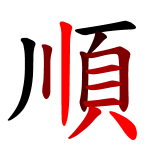 Is it necessary to learn the stroke order of Chinese characters? Yes, you should learn stroke order. Native speakers write the way they do for a reason: it’s more practical and efficient. Your characters will look better, it will be easier to make sense of other people’s handwriting, and using handwriting input will be easier. Finally, there’s no good alternative to correct stroke order, because making up your own stroke order creates other problems.
Is it necessary to learn the stroke order of Chinese characters? Yes, you should learn stroke order. Native speakers write the way they do for a reason: it’s more practical and efficient. Your characters will look better, it will be easier to make sense of other people’s handwriting, and using handwriting input will be easier. Finally, there’s no good alternative to correct stroke order, because making up your own stroke order creates other problems. All the resources you need to learn and teach Chinese stroke order – This includes apps, websites, printable worksheets, where to find information about official standards for stroke order and so on. Many dictionaries offer stroke order animation and some apps like Skritter has it built into the very core of the learning process.
All the resources you need to learn and teach Chinese stroke order – This includes apps, websites, printable worksheets, where to find information about official standards for stroke order and so on. Many dictionaries offer stroke order animation and some apps like Skritter has it built into the very core of the learning process.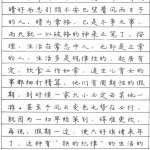 How to improve your Chinese handwriting – As argued above, learning to write by hand is a separate skill in Chinese, and this article takes a closer look at what is required of you to be able to do it well, along with problems you will encounter along the way. The process is separated into intent (what you want to write) and execution (what you actually write). Depending on which you struggle with, the remedies will be different! I expanded on this specific topic here as well: What you intend to write is more important than the character you actually write.
How to improve your Chinese handwriting – As argued above, learning to write by hand is a separate skill in Chinese, and this article takes a closer look at what is required of you to be able to do it well, along with problems you will encounter along the way. The process is separated into intent (what you want to write) and execution (what you actually write). Depending on which you struggle with, the remedies will be different! I expanded on this specific topic here as well: What you intend to write is more important than the character you actually write.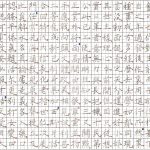 Handwriting Chinese characters: The minimum requirements – This article goes through the nitty-gritty of writing characters by hand, the kind of things that your teacher might mention briefly now and then, but isn’t typically taught at all these days. Note that while the title says “minimum”, this goes beyond what most second language learners need.
Handwriting Chinese characters: The minimum requirements – This article goes through the nitty-gritty of writing characters by hand, the kind of things that your teacher might mention briefly now and then, but isn’t typically taught at all these days. Note that while the title says “minimum”, this goes beyond what most second language learners need.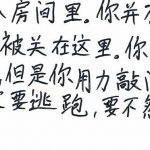 36 samples of Chinese handwriting from students and native speakers – While not being advice about how to write by hand, this article might nevertheless be interesting because it shows you how other people write Chinese characters by hand, which is not always easy to find if you’re learning Chinese in your home country. More importantly, they write exactly the same text, so you can compare! Samples include both native speakers and second language learners on various levels.
36 samples of Chinese handwriting from students and native speakers – While not being advice about how to write by hand, this article might nevertheless be interesting because it shows you how other people write Chinese characters by hand, which is not always easy to find if you’re learning Chinese in your home country. More importantly, they write exactly the same text, so you can compare! Samples include both native speakers and second language learners on various levels.
3 Reviewing and remembering Chinese characters
I’ve learnt characters for more than a decade, and as all long-time learners can testify, Chinese character knowledge is something you have to use constantly or you will forget what you have learnt. This is particularly true for handwriting, but this part is not limited to handwriting in particular, but rather the general goal of remembering what we learn.
3.1 How to not forget the Chinese characters you’ve learnt
The first and most obvious thing to say is that you have to review characters to remember them. This can be done in many ways, such as reading a lot, typing, using apps to review and so on, but if you don’t review, you will forget most of what you have learnt.
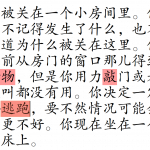 An introduction to extensive reading for Chinese learners – Reading has many benefits for your learning in general, but it’s definitely the best way to review characters and vocabulary in general. If you read extensively, i.e. where you understand almost everything you read, you can also learn new characters and words this way!
An introduction to extensive reading for Chinese learners – Reading has many benefits for your learning in general, but it’s definitely the best way to review characters and vocabulary in general. If you read extensively, i.e. where you understand almost everything you read, you can also learn new characters and words this way!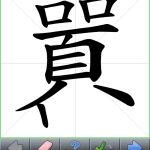 Three ways to improve the way you review Chinese characters – Most students don’t review characters very efficiently, so this article goes through there important ways to improve: 1) understand what you’re doing, 2) spread out your reviews (see spaced repetition below), and 3) make sure your review method is valid (meaning that what you learn actually is transferable to the area you want to use it in).
Three ways to improve the way you review Chinese characters – Most students don’t review characters very efficiently, so this article goes through there important ways to improve: 1) understand what you’re doing, 2) spread out your reviews (see spaced repetition below), and 3) make sure your review method is valid (meaning that what you learn actually is transferable to the area you want to use it in).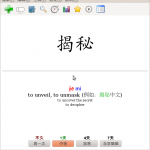 Spaced repetition software and why you should use it – Reading involves passive recognition, rather than active recall. If you want to get most out of every minute you spend on vocabulary review, you should check out spaced repetition software, or SRS for short. These programs use flashcards to combine active recall with efficient scheduling of reviews, which has been shown to have very large benefits on retention. You don’t have to use SRS and it has its limits, but it is a very powerful way of remembering everything you’ve learnt. You can of course use the spacing effect without using flashcards!
Spaced repetition software and why you should use it – Reading involves passive recognition, rather than active recall. If you want to get most out of every minute you spend on vocabulary review, you should check out spaced repetition software, or SRS for short. These programs use flashcards to combine active recall with efficient scheduling of reviews, which has been shown to have very large benefits on retention. You don’t have to use SRS and it has its limits, but it is a very powerful way of remembering everything you’ve learnt. You can of course use the spacing effect without using flashcards! Skritter review: Boosting your Chinese character learning – My favourite app for learning Chinese characters and words, particularly geared towards deep processing and writing by hand on screen. I’ve used this app for almost a decade now and I still try to use it every day. Requires a subscription, but also offers som content completely for free.
Skritter review: Boosting your Chinese character learning – My favourite app for learning Chinese characters and words, particularly geared towards deep processing and writing by hand on screen. I’ve used this app for almost a decade now and I still try to use it every day. Requires a subscription, but also offers som content completely for free. Anki, the best of spaced repetition software – This app is for students who like full control and to be able to tinker with their spaced repetition experience. Anki is not designed specifically for Chinese, but there is a very useful Chinese support plug-in that adds a lot of useful features. Anki is free on all platforms except iOS.
Anki, the best of spaced repetition software – This app is for students who like full control and to be able to tinker with their spaced repetition experience. Anki is not designed specifically for Chinese, but there is a very useful Chinese support plug-in that adds a lot of useful features. Anki is free on all platforms except iOS.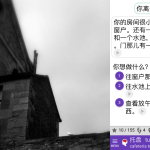 Reading is a lot like spaced repetition, only better – Let’s remember that there’s no magic involved in SRS; it’s just a clever way of scheduling flashcard reviews. You can get the same effect by reading a lot, which is what this article compares. While flashcards might be more efficient for certain things (such as handwriting Chinese characters), reading has lots of other benefits that flashcards don’t have.
Reading is a lot like spaced repetition, only better – Let’s remember that there’s no magic involved in SRS; it’s just a clever way of scheduling flashcard reviews. You can get the same effect by reading a lot, which is what this article compares. While flashcards might be more efficient for certain things (such as handwriting Chinese characters), reading has lots of other benefits that flashcards don’t have.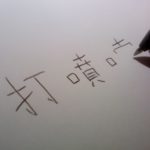 You can’t learn Chinese characters by rote – Technically, you can learn characters by roe, but it takes so much time that it’s impossible for most second language learners. While you can brute-force characters into your long-term memory, unless you understand what you’re doing and are able to form meaningful connections between characters and other knowledge stored in your brain, it will be very, very hard to remember in the long run.
You can’t learn Chinese characters by rote – Technically, you can learn characters by roe, but it takes so much time that it’s impossible for most second language learners. While you can brute-force characters into your long-term memory, unless you understand what you’re doing and are able to form meaningful connections between characters and other knowledge stored in your brain, it will be very, very hard to remember in the long run.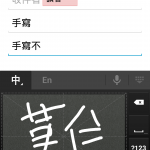 Learning to write Chinese characters through communication – Both written and spoken language exist for the purpose of communication, yet few people learn characters in a communicative setting. By relying on handwritten input on your phone (among other things), you can integrate writing characters into a meaningful context and your learning is driven by your own desire to express yourself, rather than what happens to be in the next chapter of your textbook.
Learning to write Chinese characters through communication – Both written and spoken language exist for the purpose of communication, yet few people learn characters in a communicative setting. By relying on handwritten input on your phone (among other things), you can integrate writing characters into a meaningful context and your learning is driven by your own desire to express yourself, rather than what happens to be in the next chapter of your textbook.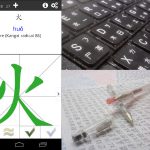 7 ways of learning to write Chinese characters – When choosing how to review characters, take your long-term goals for learning Chinese into account. You need to make sure that the way you practise will actually get you to your goal. This article goes through seven ways of reviewing characters, discussing the pros and cons of each: writing on paper, writing with your finger, writing in your mind, writing on screen without feedback, writing on screen with feedback, no writing just looking, and finally, only reading and typing
7 ways of learning to write Chinese characters – When choosing how to review characters, take your long-term goals for learning Chinese into account. You need to make sure that the way you practise will actually get you to your goal. This article goes through seven ways of reviewing characters, discussing the pros and cons of each: writing on paper, writing with your finger, writing in your mind, writing on screen without feedback, writing on screen with feedback, no writing just looking, and finally, only reading and typing
3.2 Mnemonics and improving your memory
Memory is often seen as something fixed, so either you’re born with a good one or you’re stuck with bad memory for the rest of your life. But this is not true. Our ability to remember things can be trained, both in the sense that we get better at it the more we do it, but also in the sense that there are techniques and tricks that can vastly improve your ability to remember.
Some of these tricks have been known since ancient times, others have been discovered through research in cognitive science (a nice summary can be found here). Some techniques are hard to learn, but others are actually very easy!
 Remembering is a skill you can learn – The most important lesson of all is that you can train your memory. This has been testified by many different people over the years, but my favourite of these come from Joshua Foer, known to most through his TED talk and his book Moonwalking with Einstein. In the linked article, I explain the basics and we try them out with a simple experiment.
Remembering is a skill you can learn – The most important lesson of all is that you can train your memory. This has been testified by many different people over the years, but my favourite of these come from Joshua Foer, known to most through his TED talk and his book Moonwalking with Einstein. In the linked article, I explain the basics and we try them out with a simple experiment.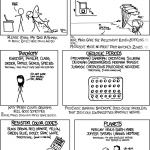 Using memory aids and mnemonics to make Chinese easier – There are many techniques available and they can all be used to learn Chinese characters. This includes memory palaces, the loci method, the journey method, and, the method I use most often, simply associating meaningful concepts and images in ways that stand out in a way that makes them easy to remember later.
Using memory aids and mnemonics to make Chinese easier – There are many techniques available and they can all be used to learn Chinese characters. This includes memory palaces, the loci method, the journey method, and, the method I use most often, simply associating meaningful concepts and images in ways that stand out in a way that makes them easy to remember later. How to create mnemonics for general or abstract character components – In general, it’s easier to remember concrete, meaningful things that can be related to what you already know in a clear way. Hence, it’s easier to remember the word “Baker” if you think of an actual baker, compared to if you think of it as a surname. Some things we want to learn are abstract or hard to pin down, so what to do? Make them concrete, because even made-up meaning is better than no meaning.
How to create mnemonics for general or abstract character components – In general, it’s easier to remember concrete, meaningful things that can be related to what you already know in a clear way. Hence, it’s easier to remember the word “Baker” if you think of an actual baker, compared to if you think of it as a surname. Some things we want to learn are abstract or hard to pin down, so what to do? Make them concrete, because even made-up meaning is better than no meaning. Are mnemonics too slow for Chinese learners? One common complaint about using mnemonics for language learning is that they are too slow. However, this criticism misses the point: the role of mnemonics is as a stepping stone from not knowing to knowing. Recalling, even if slowly, is much better than not recalling. Gradually, mnemonics can be cast aside, except for handwriting characters where they remain useful even for very advanced learners.
Are mnemonics too slow for Chinese learners? One common complaint about using mnemonics for language learning is that they are too slow. However, this criticism misses the point: the role of mnemonics is as a stepping stone from not knowing to knowing. Recalling, even if slowly, is much better than not recalling. Gradually, mnemonics can be cast aside, except for handwriting characters where they remain useful even for very advanced learners. Don’t use mnemonics for everything – When introduced to the fantastic world of memory hacking and mnemonics, some people go all-in and want to use them to learn everything. However, this is not really necessary and will create a lot of extra work. Chinese is still a language, not a list of abstract things to memorise. Use mnemonics when you need to, not as the default solution to remember things you’d probably remember without them.
Don’t use mnemonics for everything – When introduced to the fantastic world of memory hacking and mnemonics, some people go all-in and want to use them to learn everything. However, this is not really necessary and will create a lot of extra work. Chinese is still a language, not a list of abstract things to memorise. Use mnemonics when you need to, not as the default solution to remember things you’d probably remember without them.
3.3 Practical considerations: Where and how to review
Learning Chinese characters does not take place in a vacuum, so we also need to put learning into the general context of our daily lives.
 Time quality: Studying the right thing at the right time – If you want to learn Chinese efficiently (as in much learnt per unit time spent), time quality is very important. For example, time with a teacher should be spent on things you can only do with a teacher (hint: learning the basic meaning and writing of characters is not such a thing). When it comes to learning and remembering characters, this means that you should…
Time quality: Studying the right thing at the right time – If you want to learn Chinese efficiently (as in much learnt per unit time spent), time quality is very important. For example, time with a teacher should be spent on things you can only do with a teacher (hint: learning the basic meaning and writing of characters is not such a thing). When it comes to learning and remembering characters, this means that you should… Diversify how you study Chinese to learn more – This means that you should spread out your learning as much as possible and use different ways to integrate it with the other things you like to do or are obliged to do. Learning Chinese is not limited to an hour a few times a week when you sit down to “learn some Chinese”. Listen to Chinese all the time while going about your daily activities, write characters on your shower walls and make sure you get most of your flashcard reviews done while waiting in lines, commuting or in other periods of brief downtime.
Diversify how you study Chinese to learn more – This means that you should spread out your learning as much as possible and use different ways to integrate it with the other things you like to do or are obliged to do. Learning Chinese is not limited to an hour a few times a week when you sit down to “learn some Chinese”. Listen to Chinese all the time while going about your daily activities, write characters on your shower walls and make sure you get most of your flashcard reviews done while waiting in lines, commuting or in other periods of brief downtime.
3.4 Beyond beginner: Character learning in the long term
Finally, I’d like to offer some advice for those of you who have been learning for a while now.
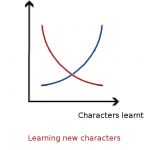 The real challenge with learning Chinese characters – Beginners think that learning new characters is the hardest part of learning to read and write characters, but more advanced students know that keeping all of them apart and knowing when to use which is where the real challenge is at. There are many things you can do about this, some of which we covered above, but also…
The real challenge with learning Chinese characters – Beginners think that learning new characters is the hardest part of learning to read and write characters, but more advanced students know that keeping all of them apart and knowing when to use which is where the real challenge is at. There are many things you can do about this, some of which we covered above, but also… Dealing with Chinese characters you keep mixing up – The key to sorting out characters you’re mixing up is to trace your errors and figure out why you’re confusing them. It’s often the case that you have overlooked something, misunderstood a key piece of information or that the problem is easily solvable just by looking at the two characters next to each other. Often, we are subconsciously confused without realising it!
Dealing with Chinese characters you keep mixing up – The key to sorting out characters you’re mixing up is to trace your errors and figure out why you’re confusing them. It’s often the case that you have overlooked something, misunderstood a key piece of information or that the problem is easily solvable just by looking at the two characters next to each other. Often, we are subconsciously confused without realising it!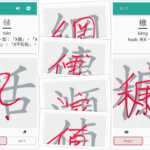 7 mistakes I made when writing Chinese characters and what I learnt from them – To show you the above-mentioned error tracing in action, I wrote this article where I go through seven mistakes I’ve made with my own character writing recently, tracing each error to the source.
7 mistakes I made when writing Chinese characters and what I learnt from them – To show you the above-mentioned error tracing in action, I wrote this article where I go through seven mistakes I’ve made with my own character writing recently, tracing each error to the source.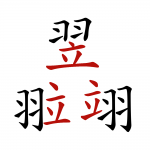 Chinese characters that share the same components but are still different – This is particularly tricky case of mixing characters up. Normally, I don’t encode the order of the components when creating mnemonics because only one way of writing the character looks even vaguely right. But this doesn’t work if the characters have exactly the same components!
Chinese characters that share the same components but are still different – This is particularly tricky case of mixing characters up. Normally, I don’t encode the order of the components when creating mnemonics because only one way of writing the character looks even vaguely right. But this doesn’t work if the characters have exactly the same components! A minimum-effort approach to writing Chinese characters by hand – Finally, let’s look at the minimum-effort approach to maintaining the ability to write by hand. This is for those who you who, like me, want to be able to write by hand, but are too busy to spend more time than absolutely necessary. The approach includes for components: reading, typing, spaced repetition and communicative handwriting.
A minimum-effort approach to writing Chinese characters by hand – Finally, let’s look at the minimum-effort approach to maintaining the ability to write by hand. This is for those who you who, like me, want to be able to write by hand, but are too busy to spend more time than absolutely necessary. The approach includes for components: reading, typing, spaced repetition and communicative handwriting.
Conclusion
The goal of this article is to provide a handy guide for all matters related to learning Chinese characters. There are probably things I have omitted or forgotten to mention, so if you have a question that is not covered here, please leave a comment below!
Editor’s note: This article, originally published in 2015, was rewritten from scratch and massively updated in February, 2021.
The Chinese keyboard to the lift in the cover image is “TC Keyboard” by Joe Lewis, CC BY-SA 2.0.

Tips and tricks for how to learn Chinese directly in your inbox
I've been learning and teaching Chinese for more than a decade. My goal is to help you find a way of learning that works for you. Sign up to my newsletter for a 7-day crash course in how to learn, as well as weekly ideas for how to improve your learning!
20 comments
Very good article!! In my classes, I try to use some of the techniques explained above and I also add semantic mapping as a way to review the characters meaning and learn new ones.
This is an awesome article! Now I have a list of every article about learning Chinese I could ever hope for. 谢谢您!
Hey Olle, this is a great article and I think the only thing I’d want to change here is that there is a big difference between learning to recognize characters and knowing how to write characters. Currently in China, the latter is becoming less and less common.
Don’t get me wrong, learning to write characters is a valuable skill, but I think that for many students, just learning to recognize characters is enough if your primary objective is to become fluent orally. Learning to write takes learning Chinese to a whole new level of dedication!
I’ve put together my own list of great tools for learning Chinese, many of which you’ve listed here as well but quite a few that you haven’t. I’m a huge fan of graded readers, which help with character recognition.
Ah, but I mainly recommend learning to write characters to beginners, not because they will write tons of Chinese by hand, but because I believe it’s very difficult to understand how characters work without actually writing them. If you’re not after handwriting itself, you don’t need to learn to write thousands of characters by hand, but as a beginner, I stil strongly suggest writing by hand, even if you stop focusing on that later.
I want study Chinese characters , i can learn PiYin very well and speak but i can not read or write chinese characters .
do you have a help please §
Salim
Hi! The article you have commented on contains a lot of advice on how to learn to read and write Chinese characters. Which methods have you tried? What worked? What didn’t?
I have been using a website called ‘remembr.it’ during these past three months. It helps to memorise up to 2200 characters.
It uses Spaced Repetition software like Anki and Skritter, and I have found it quite useful. I have memorised about 700 characters so far using it, spending about 90 minutes daily on it.
I’m becoming a little frustrated while trying to learn characters, so I would really appreciate some advice. I am an intermediate learner when using pinyin, but almost a total beginner when it comes to characters.
I tried Anki, but I guess I’m so used to Memrise where I have to type in or choose the correct answer, that simply flipping the card was just not doing much for my memory. Pleco is available for mobile only, so I can’t use it on my laptop 🙁
I am currently learning a Memrise course “First 500 characters” (https://app.memrise.com/course/268/first-500-characters-in-mandarin-chinese/) and I got to about 270 characters so far, but I found that:
1. it is extremely difficult for me to differentiate between similar characters, like 任 appoint, 许 allow, 性 – gender, 件 – correspondence, 住 – live – they all seem almost same to me and every time I have to type one of them I’m mostly guessing
2. it is hard to memorize characters out of context, because very often the character is never/rarely used by itself, my italki tutor asked me why am I even learning 件 or 任 since apparently they are not used as standalone words
I tried to create my own Memrise course with high-frequency words but again it wasn’t easy to memorize words that consist of 2-3 characters.
I guess what I need is a course which explains the radicals first and then teaches high frequency words. I tried this course for radicals (https://app.memrise.com/course/47843/common-simplified-chinese-radicals/) and it was not easy to remember those that are not commonly used – like ladle, inch, minister, tiger stripes (where am I going to use/need tiger stripes?)
Do you maybe know of any course/website that could help me out? Thank you so much in advance!
Great post
Great post Olle, thanks.
I currently learned all 214 radicals. Since I know all building elements, I feel ready to easily memorize characters ))
Which resource to use to understand how combination of radicals turn into sounds and meaning?
Thanks
Hi! I think the character course I built with Skritter is a very good introduction, although I’m obviously biased. 🙂 There’s currently a vocabulary challenge on, which gives you a month of free access to Skritter, so you could check out the course there if you want! If you want a more advanced course, I suggest Outlier Linguistics, which is much more in-depth, but far from beginner-friendly (in my opinion). I have also written about how characters work in a series of articles starting here: The building blocks of Chinese, part 1: Chinese characters and words in a nutshell
Dear Olle Linge,
Thank you for this very interesting website. I ordinarily work with Vedic, and my goal of learning Chinese is somewhat nonstandard, so both common sense and intuition tell me that I should consult you briefly, just to verify that I’m not missing anything essential. Do you do Zoom consultations? If so, please tell me how to proceed to set up a meeting.
Best wishes,
Irene
Dear Irene,
Yes, I do offer such consultations! I have responded to the email you sent so we can continue the conversation there.
Best wishes,
Olle
Extremely comprehensive article with a lot of sub-articles around the topics. I usually get asked similar questions about Chinese characters and learning Chinese in general.
One thing I didn’t see here is contextual learning of Characters. I’ve been through the “trauma” of studying flashcards endlessly but trying to read and write them in context is useful for breaking up the necessary vocabulary study. I wrote a much less detailed article about it here: https://explore-chinese.com/2023/09/14/study-chinese-characters/
Appreciate the depth and detail in this article, I will definitely recommend some of these people to my fellow learners.
please help
What do you need help with?
After many years of struggling with Anki I finally figured out how to use it successfully (I add exactly the same number of new words every day and review them every day. This keeps the review time commitment predictable)
However I now use anki only for words. I have the front of the card play the audio and the back show the full word (also something I learned about thanks to Hacking Chiness! 🙏)
Now I am wondering if it makes sense to look at characters separatly from words? I think the ‘auidio type question’ would not work for them because there are too many individual characters with exactly the same sound. So I’d probably need an entirely separate deck.
Is that something you did / you would recommend, or does that take up more time than it’s worth?
I think it certainly makes sense to invest some effort into individual characters, but I think there are many ways to do so beyond flashcards. I think the most important reason to focus on characters in themselves is that it’s the only way to understand how the writing system works. You can check out my building blocks series, for example, or check either the Skritter character course or the Outlier Chinese character masterclass.
The point is that knowing individual characters is required to be able to see them as building blocks, which will in turn allow you to learn words much more easily. I wrote about my experience focusing on individual characters here, but it’s pretty old and not very good. 🙂
You will probably know the meaning of many characters even if you’ve never studied them as separate units, and most of the rest you’ll be able to learn simply by looking them up when something doesn’t make sense. For example, if you struggle with a compound word, that might be a good time to look up the component characters. Did you know them? Do you understand how they contributed to the meaning of the word? This type of studying will teach most individual characters you need to know. You can of course create flashcards if you want, but I would think that character -> meaning is the only required card in that case, unless you want to include handwriting.
Alright thanks so much for the extensive answer, this is super helpful!! 😊
I already did your Skritter character course and loved it, and the Pleco outliers dict is so great that I definitely want to take their course as well, just didn’t find the time yet.
I’m going to follow your advice to do character -> meaning only (even tho it will be hard for me to resist doing character -> sound at the same time also). Do you think linking one character to a unique word makes sense (as for example suggested by James Heisig) or would you say doing it more loosely is just as good?
Also just another big thanks here for all the great material you put out there, it’s truly incredible!
Glad to hear you found the character course over at Skritter helpful! 🙂 Regarding your question about unique words, I think it makes sense to learn the basic meaning of a character, because the other meanings are often related to this meaning semantically. There are sound loans and some characters have a very different basic meaning today than they did when they first appeared, but in most cases, there is a basic meaning you can use, and you will then get the others “for free” as it were. For this, the Outlier Dictionary is great, because it gives you the semantic trees for characters and you can see what meaning they think is the most basic one and how the others are derived from that meaning. I see very little utility in trying to remember all the meanings of a character. Sure, if you see no logical connection at all between two meanings and they both seem important and common, maybe, but this ought to be pretty rare.